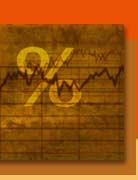





 |
 |
 |
 |
 |
 | |
Housing Cycle
T
• Adjustable mortgage rates have risen dramatically
• Lending standards are being tightened
• Other housing-related costs are increasing
• Total homeowner debt and monthly payments are at
cyclical peaks
It makes sense for housing prices to rise over time as the population increases, as available land decreases and as inflation increases the costs of labor and materials. However, the industry has always been cyclical and corrections always occur when the market gets ahead of itself and when interest rates rise.
The ability of home buyers to pay higher prices is a function of their available cash for a down payment and of their expected disposable income to make monthly mortgage payments. Buyers have stretched to make payments as exhibited by recent statistics showing that household debt payments, as a percentage of disposable income, have not been higher within the past quarter century.
Market
Environment
The Sellers' Market in residential real estate has ended. The Wall Street Journal stated, on 11/29/05: “The question is no longer whether housing is slowing, but how severe the downturn is going to be.” According to a study conducted by Roper Public Affairs and Media for TIAA-CREF (November 2005), nearly three out of four investors believe housing in the U.S. is overvalued, while just one in five believe it is valued appropriately. The stock market values of homebuilders and mortgage lenders have fallen precipitously.
Lou Barnes, of Inman Real Estate News, recently wrote:
“Fed
politics aside, I don't for the life of me know what is different about our
economy now compared to 1994-1998, when the baseline for Fed funds was 5
percent-plus (mortgages at 8 percent), and I don't see any reason for the Fed to
stop short of 5 percent unless and until the economy slows markedly. Inherent
economic strength aside, the grotesque budget irresponsibility in Congress and
at the White House is working to stimulate the economy, not slow it.
“Lagging
behavior in mortgage rates is delaying the full effect of the Fed's tightening.
Fixed-rate mortgages are still below the 6.5 percent highs of the last three
years, but the next .75 percent coming from the Fed is certain to push mortgages
up toward 7 percent by spring. However, 7 percent was the low of the
1990s. Nobody knows or can know the level at which housing will slump.
“ARM
indices are rising, with T-bill and LIBOR-based ARMs going to the high sixes
right now. However, the lagging indices, MTA and COFI, will take a year to 18
months to fully reflect the Fed. If the Fed stops as low as 4.5 percent, the
whole ARM universe will adjust above 7 percent.
“This
lagging mortgage action is one of many reasons that the Fed tends to overshoot
its proper stopping point, and likely will this time.”
The delayed impact of the large number
of adjustable and teaser rates recently used will be felt in 2007 when at least
five million loans are due to be re-priced. More than half of those loans are
sub-prime. The flattening of the yield curve means that “ARMs now do nothing
to add to purchasing power.” Rates on 5 year ARMs have almost doubled. Construction money rates have doubled. Piggy-back seconds have
gone from 5+% to 8+%. “The innovative products suddenly have no utility at
all. Interest only loans have buyers just treading water.”
Both
Builders and Lenders are at a point in the cycle when they should be receptive
to new ideas. Builders may need to offer price discounts or other
concessions in order to sell homes that have been built at a rate that is 70% to
100% greater than the numbers of new homes built during the decade of the 1990s.
In fact, there are now more unsold new homes under construction than ever
before in history, even when homeownership percentages have never been
higher. There are also more vacant homes for sale than ever - both in
absolute numbers and as a percentage of the total housing stock. Lenders who find that ARMs are irrelevant in the new environment may seek
other products that add to purchasing power or that assuage sellers who are
unable to duplicate recent gains made by their neighbors.
Interest Rates
Interest rates are a function of supply and demand for money. Worldwide business
has required little in the way
of debt capital in a low growth environment with shrinking working capital needs. In fact, commercial and industrial
loan volumes in the U.S. have declined every quarter from 2001 through 2004, but are now heading up.
Less capital will be available for mortgages.
An examination of Fed activity shows how the supply of capital was rapidly expanded. There were nine separate liquidity events during the six years from 1999-2004. Those events are associated with three elections, two tax cuts, the bursting of the internet bubble, a recession, Y2K and 9/11. The money created flooded the system with capital which was utilized for mortgages.
A further examination of Fed activity shows a dramatic slowing of the growth of money since summer of 2004. This decline stands in sharp contrast to the double digit year-over-year increases throughout the 1999-2004 period. Greenspan injected one last burst of liquidity in late 2005. Since taking over the Fed, Bernanke has drained liquidity from the markets by keeping the Adjusted Monetary Base essentially flat.
Housing Price Forecast
The extended sellers' market has ended due to increased interest rates, increases in other housing
related costs and tighter lending standards. Pressure to tighten lending
standards will continue to exert severe pressure on buyers and on the refi
market.
Housing prices will be impacted by the increase of other costs that reduce funds available for the mortgage payments that are needed to support elevated housing prices. Utilities and taxes are both likely to increase. Oil and gas prices are unstable and water is a scarce resource in desert climates such as southern California. Property taxes might also be expected to rise because no reasonable alternative exists to pay for programs generously granted to their constituents by representatives in state government. It is likely that either assessed values or tax rates will rise in many areas.
Financial Institutions have had ready access to capital in recent years. The availability of funds has been unprecedented and is unlikely to continue. Many lenders have used short term money to fund long term mortgages. They have continued to refinance some of their capital requirements short term and have sold other mortgages to government sponsored entities (GSEs) such as Fannie Mae and Freddie Mac. The GSEs have financed many of their purchases with short term capital which rates have risen dramatically. Many homes have appreciated beyond the GSEs' lending limits and they face mounting criticism by the media, regulators and their competitors for the way they have taken advantage of their access to capital with increasingly risky leverage in transactions only peripherally related to their mission.
The effect of those causes is a more normal real estate market. The sellers' market of recent years may evolve into a buyers' market for some period of time. Economists teach that prices are determined "on the margin," by sellers who must relocate or downsize in a buyer's market. The potential for dislocation exists in a scenario that has relied on "investors" and sub-prime borrowers for its recent strength. Sellers will feel extreme pressure when there is resistance to their listing at perceived value. The opportunity will then exist to introduce a marketing tool to the seller which helps him to bridge the gap between bid and ask in order to close a deal. The Closing Factor can be extremely valuable in those circumstances.